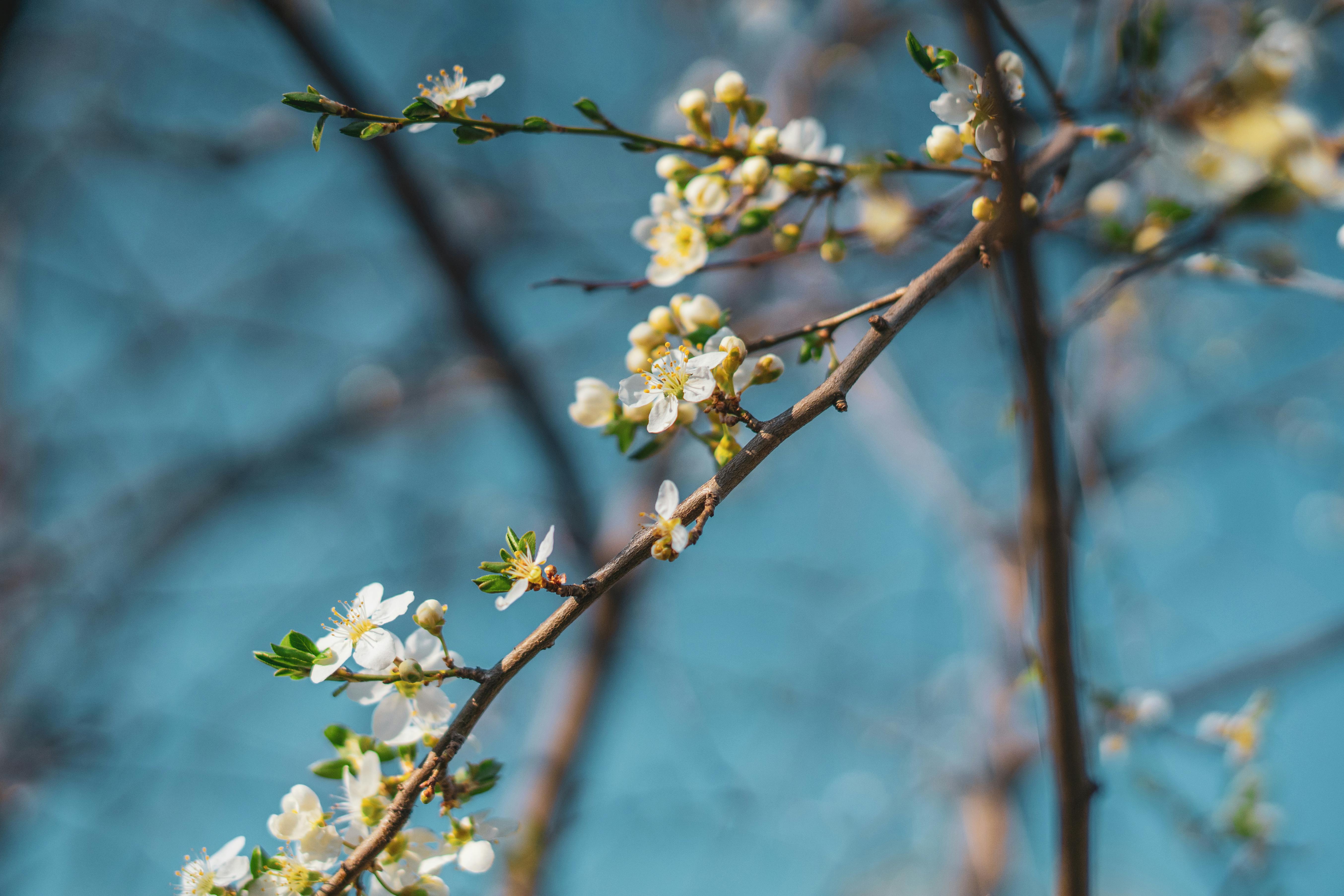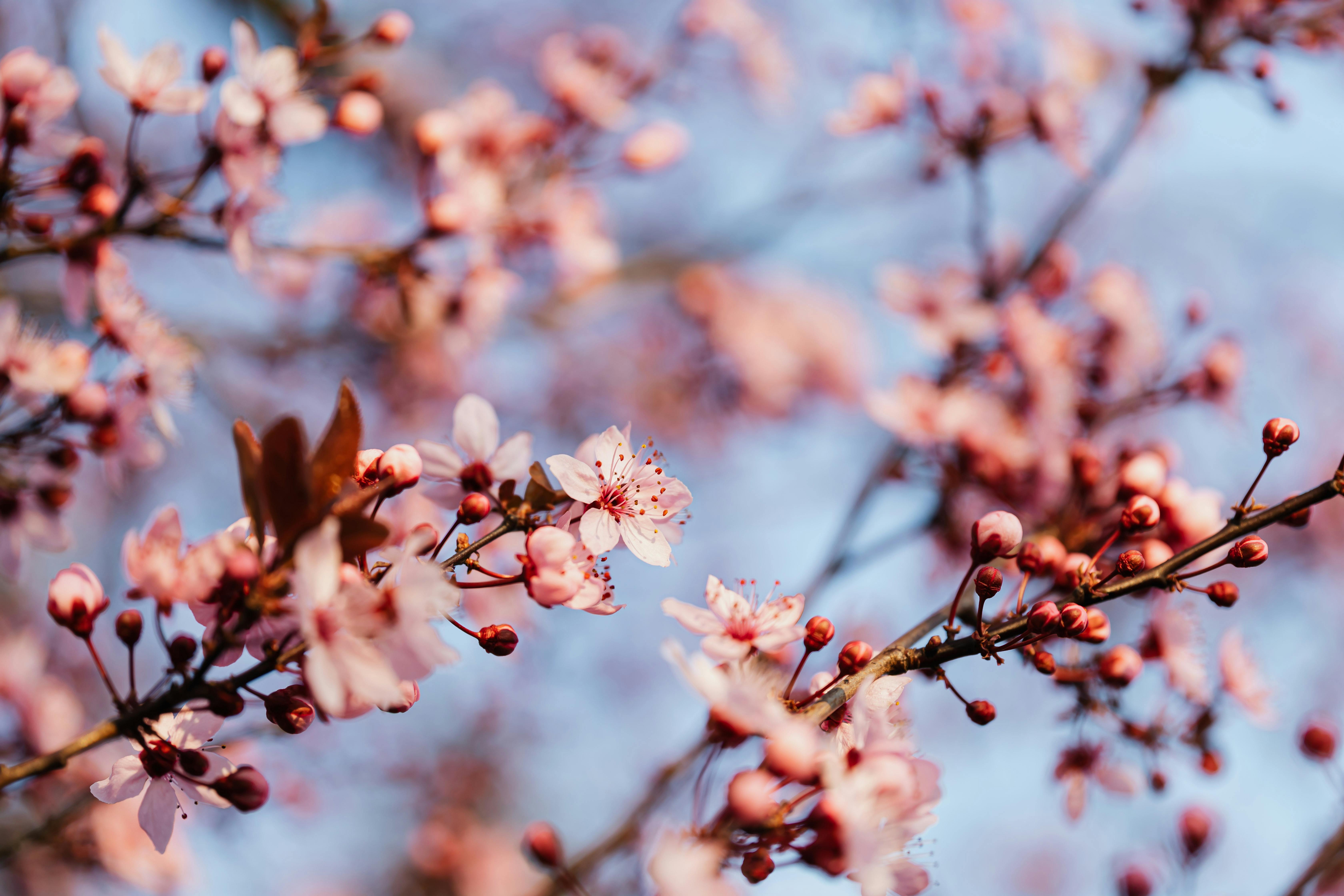The Wild Cherry Plant, also known as Prunus avium, is a species of cherry tree native to Europe, western Asia and North Africa. This deciduous tree can grow up to 30 m (98 ft) in height, producing fragrant white flowers in the spring followed by dark red cherries in the summer. The fruit of the Wild Cherry Plant is often used for jams and juices, while its wood is favored for furniture making due to its strength and color. This attractive ornamental tree can also be planted for its ornamental value, with its deep-green leaves turning yellow-bronze in autumn.A wild cherry plant is a species of cherry tree that grows naturally in the wild. It is typically a deciduous tree with small, white flowers and dark red fruit. The fruit is edible and can be used for preserves, jams, jellies, pies, and other culinary uses. Wild cherry plants are often used for ornamental purposes due to their attractive foliage and colorful fruits. They are also popular with wildlife as a food source and provide shelter for birds.
Contents
Where Can Wild Cherry Plants be Found?
Wild cherry plants can be found growing in various parts of the world. In North America, they are commonly found in the eastern United States and Canada. They can also be found in parts of Europe, Asia, and Africa. Wild cherries tend to grow in temperate climates, but some species have adapted to subtropical and tropical environments as well.
Wild cherries are typically found growing in forests, fields, and along the edges of woodlands. The trees can reach up to fifty feet tall, with a spread of up to thirty feet wide. They usually have a short trunk and multiple trunks that branch out near the ground. The bark is usually grey or reddish-brown and has deep furrows that are often visible even from a distance.
The leaves of wild cherry trees are oval-shaped with pointed tips and serrated edges. They range in color from dark green to yellowish-green. The flowers of these trees are white or pinkish-white and bloom in the springtime before the leaves appear. The fruit is small and dark red when ripe and contains a single seed inside.
Wild cherries provide an important food source for many animals including deer, bears, birds, squirrels, raccoons, chipmunks, mice, foxes, rabbits, coyotes, skunks, opossums and other wildlife species that inhabit the same areas as these trees. Additionally, humans enjoy eating wild cherries for their unique flavor as well as for their health benefits which include high levels of antioxidants that can help protect against disease and improve overall health.
What Does a Wild Cherry Plant Look Like?
Wild cherry plants are small deciduous trees with a distinctive look. They typically grow between 20 and 30 feet tall, with a broadly oval to rounded crown. The bark is smooth and reddish-brown in color, while the twigs are slender, reddish-brown and often have small thorns. The leaves of the wild cherry tree are alternate, simple and lanceolate in shape with finely serrated margins. They are dark green on top and paler green below, with prominent midribs. In the fall they turn yellow or orange-red before dropping off. Small white flowers appear in clusters in spring, followed by red or yellow fruits which ripen in late summer. The fruit can be eaten raw, made into jams and jellies, or used for baking.
How Do Wild Cherry Plants Grow?
Wild cherry plants are native to North America and can be found growing in a variety of climates, from moist forests to dry prairies. These plants are quite hardy and can survive a wide range of temperatures. Wild cherry plants prefer sandy or loamy soils that are well drained and moderately acidic, but they can also grow in clay soils with adequate drainage. They thrive best in full sun but will tolerate partial shade and need an average amount of water.
Wild cherry plants propagate either through seeds or by vegetative means, such as softwood cuttings or root suckers. When planting wild cherries, it is important to provide them with plenty of space between other trees and shrubs so they can receive adequate sunlight and airflow. Pruning is important for controlling the height, shape, and size of the tree as well as removing any dead or diseased branches.
Fruits typically appear on wild cherry plants after two or three years, although some varieties may take up to five years before producing fruits. The flowers will be white or pinkish-white in color and will bloom for about one month during the springtime before giving way to drupes that ripen into small cherries during the summer months. Birds are a common source of pollination for these plants, although some varieties can be self-pollinating.
When harvesting wild cherries, it is important to wait until the fruit is fully ripe before picking it off the tree. Different varieties may ripen at different times throughout the season so it’s important to keep an eye on the tree throughout this period. Once harvested, the fruit will begin to spoil quickly so it should either be consumed right away or preserved by freezing, canning, drying, or making jams and jellies.
In conclusion, wild cherry plants are quite versatile and easy to care for; they require little maintenance but will reward gardeners with lovely flowers in springtime followed by tasty fruits during summer months if cared for properly.
What Are the Benefits of Wild Cherry Plants?
Wild cherry plants offer a variety of benefits that can make them a desirable addition to any garden. For starters, they are easy to maintain and don’t require much effort to keep looking their best. They also provide an attractive landscape feature and are ideal for creating a natural privacy screen or hedge. Additionally, wild cherry plants are known for their fragrant flowers, which attract beneficial insects such as bees and butterflies, as well as birds that enjoy snacking on the berries.
Wild cherry plants are also known for their environmental benefits. They help clean the air by removing pollutants from the atmosphere, and they improve soil fertility by adding organic material to the ground when their leaves decompose. Finally, wild cherry trees provide shade and shelter from wind and rain, making them a great addition to any garden or landscape.
In conclusion, there are many benefits of growing wild cherry plants in your garden or landscape. Not only do they provide an attractive feature and fragrant flowers, but they also help clean the air, improve soil fertility, and provide shade and shelter from wind and rain.

Are There Any Dangers Associated with Wild Cherry Plants?
Wild cherry plants, also known as Prunus avium, are an ornamental tree species native to Europe, western Asia, and North Africa. While the trees are popular for their pleasant aroma and attractive flowers, there are some potential dangers associated with wild cherry plants. These include contact dermatitis, ingestion of toxic parts of the plant, and allergic reactions.
Contact dermatitis is a skin reaction that can occur when a person touches or comes into contact with certain plants. In the case of wild cherry plants, contact dermatitis can be caused by coming into contact with the sap or sap-coated leaves. Symptoms of contact dermatitis may include redness, itching, and swelling of the affected area.
Ingestion of certain parts of wild cherry plants can also be dangerous. The leaves, twigs, and bark contain hydrocyanic acid (HCN), which can cause severe illness or even death if ingested in large amounts. HCN poisoning symptoms may include abdominal pain, nausea, vomiting and dizziness. As such, it is important to keep children and pets away from wild cherry plants to prevent accidental ingestion.
Finally, some people may experience an allergic reaction when exposed to wild cherry trees or their pollen. Allergic reactions may include sneezing and difficulty breathing in addition to skin irritation or hives. People who are sensitive to pollen should avoid areas where these trees are located during blooming season if possible.
In summary, while wild cherry plants have an attractive appearance and pleasant aroma that makes them popular in many landscapes, they do pose some potential dangers including contact dermatitis, toxic effects if parts of the plant are ingested and allergic reactions for those sensitive to their pollen. To minimize risks associated with these trees it is important to keep children and pets away from them while taking appropriate safety precautions if exposed yourself
Planting Wild Cherry Plants
Wild cherry plants can be grown from seed or from cuttings. When planting from seed, it is important to remember that the seeds must be stratified before planting. This means that they need to be kept in a cool, moist environment for several weeks before planting them into the soil. It is also important to note that wild cherry plants prefer acidic soils, so it is best to incorporate some organic matter into the soil prior to planting.
Caring for Wild Cherry Plants
Once planted, wild cherry plants need to be watered regularly until they have become established in their new environment. They also require adequate amounts of sunlight and should be given fertilizer once or twice a year. Pruning should also be done regularly to help keep the plant healthy and maintain its desired shape. Lastly, it is important to keep an eye out for pests and diseases that can affect the health of wild cherry plants and take steps to control them if necessary.
How to Propagate Wild Cherry Plants
Propagating wild cherry plants is a great way to increase the number of trees in your landscape. Wild cherry trees have a number of benefits including providing a food source for wildlife, and they can also be used as a windbreak or shade tree. Propagation can be done through several different methods including seeds, cuttings, and root division. Here are some tips for propagating wild cherry plants.
The first method of propagation is through seeds. Collect the seeds from ripened cherry fruits and sow them in well-draining soil at least 4 inches apart. The seeds should be kept moist, but not soggy, and watered regularly until the seedlings emerge.
The second method is through cuttings. Take semi-hardwood cuttings from the current season’s growth in the late summer or early fall and place them in rooting medium such as sand or perlite. Keep the cuttings moist and covered with plastic until they form roots before transplanting into their permanent location in soil.
The third method is through root division. This process involves dividing an existing mature plant into several pieces each with some roots attached. The divisions should have at least two sets of leaves each and should be planted immediately in their permanent location in soil.
No matter which propagation method you choose, it is important to provide your wild cherry plant with adequate water, sunlight, and nutrients to ensure it grows strong and healthy. With proper care and maintenance you can enjoy your wild cherry tree for many years to come!

Conclusion
The wild cherry plant is a versatile species that can be used in multiple ways. It is great for making jams, jellies and wines, and its wood is also used for making furniture and tools. The medicinal properties of the wild cherry plant make it an important part of traditional herbal remedies. The tree is also an excellent source of food for wildlife, providing a nutritious snack to birds and other animals. Overall, the wild cherry plant has a lot to offer, both in terms of its uses and its environmental benefits.
For anyone looking for an easy-to-grow plant that can provide numerous benefits, the wild cherry plant should be considered. This hardy species is found in many parts of North America and is sure to be a welcome addition to any garden or landscape. With proper care, the wild cherry tree can provide years of enjoyment and usefulness.

0 Comments